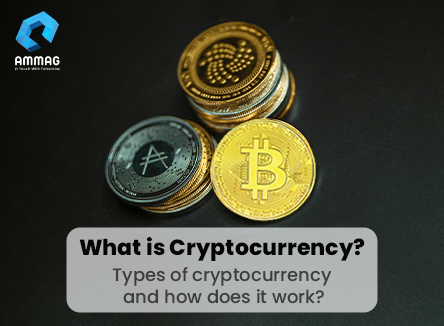Top 10 cryptocurrencies and the trends shaping the market

The cryptocurrency market continues to be a dynamic and rapidly evolving space. As we look forward to 2024 and 2025, several key trends and top-performing cryptocurrencies stand out. Cryptocurrencies have revolutionized the financial landscape, offering decentralized alternatives to traditional fiat currencies and financial systems. In 2024, significant developments in market performance, regulatory advancements, and new scope in crypto token development are driving the market forward.
Here, we explore the top 10 cryptocurrencies by market capitalization and the key trends influencing their growth.
Market Performance Highlights
June 2024 saw an interesting performance from leading cryptocurrencies. Ethereum peaked at $3812, closing above $3,400 fueled by optimism around the potential approval of spot Ethereum ETFs. Bitcoin, another market leader, reached highs of $71,000 before settling above $63,000 by month-end. Overall, Bitcoin gained a year-to-date increase of 43.18%, while Ethereum's gain was 44.49% from year-to-date.
Regulatory Developments
The regulatory landscape is evolving, with significant legislative moves in Washington, D.C. The Financial Innovation and Technology for the 21st Century Act, passed by the House of Representatives, promises a detailed framework for the disclosure and registration of digital asset companies, positioning the Commodity Futures Trading Commission (CFTC) as the primary regulator. This regulatory clarity is likely to foster a more stable and transparent crypto market.
Top 10 Cryptocurrencies
1. Bitcoin (BTC)
Market Cap: $1.4 trillion
Year-over-Year Return: 165%
Bitcoin remains the most dominant cryptocurrency, often viewed
as digital gold and a store of value. It was the first
cryptocurrency to be created and operates on a
decentralized peer-to-peer network. Bitcoin’s primary use case is as an alternative to
traditional fiat currencies, providing a secure and
transparent means of transferring value.
2. Ethereum (ETH)
Market Cap: $460.5 billion
Year-over-Year Return: 106%
Ethereum supports a wide range of decentralized applications,
smart contracts, and NFTs, making it a fundamental platform in
the crypto space. It is known for its flexibility and the
ability to create and execute smart contracts, which are
self-executing contracts with the terms directly written into
code. This has made Ethereum a key player in the development
of decentralized finance (DeFi) and various blockchain
projects.
3. Tether (USDT)
Market Cap: $112.4 billion
Year-over-Year Return: 0%
Tether is a stablecoin pegged to the US dollar, providing
stability and liquidity in the volatile crypto market. Each
Tether token is backed by real-world assets, ensuring its
value remains stable. Tether is widely used in cryptocurrency
trading to provide a consistent value for transactions, making
it an essential tool for traders seeking to mitigate the risk
of price fluctuations.
4. Binance Coin (BNB)
Market Cap: $104.5 billion
Year-over-Year Return: 162%
Binance Coin is used to pay for transactions on the Binance
Exchange and participate in Binance's token sales. The coin
benefits from Binance's expansive ecosystem, which includes
one of the largest cryptocurrency exchanges globally. BNB
offers users various incentives, such as reduced trading fees,
and is also used to power Binance’s decentralized exchange
(DEX) and various blockchain-based services within the Binance
Smart Chain (BSC).
5. Solana (SOL)
Market Cap: $79.5 billion
Year-over-Year Return: 773%
Solana offers high-speed transactions and low fees,
positioning itself as a strong competitor to Ethereum with its
scalable blockchain platform. Solana’s unique consensus
mechanism, Proof of History (PoH), allows for high throughput
and fast transaction times. This scalability makes Solana an
attractive platform for developers and projects, particularly
in the areas of DeFi, NFTs, and Web3 applications.
6. U.S. Dollar Coin (USDC)
Market Cap: $32.6 billion
Year-over-Year Return: 0%
USDC is a stablecoin pegged to the US dollar, used for
trading, payments, and as a stable store of value. Each
USDC token is
backed by a dollar held in reserve, ensuring a 1:1 value with
the US dollar. USDC is widely used in the cryptocurrency
ecosystem for its reliability and transparency, providing a
stable medium for trading and transactions within the volatile
market.
7. XRP (XRP)
Market Cap: $29.1 billion
Year-over-Year Return: -1%
XRP is designed for fast and efficient cross-border payments,
aiming to provide an alternative to traditional banking
systems. XRP’s blockchain technology allows for secure and
instant transfers of value across the globe, making it a
preferred choice for financial institutions seeking to reduce
the cost and time associated with international transactions.
XRP continues to be a key player in the fintech and remittance
sectors.
8. Dogecoin (DOGE)
Market Cap: $23.5 billion
Year-over-Year Return: 138%
Initially created as a joke, Dogecoin has gained a strong
community and significant market presence. Known for its Shiba
Inu dog meme, Dogecoin has been embraced by a large community
and celebrities, often used for tipping and charitable
donations. Despite its origins, Dogecoin’s fast transaction
times and low fees have made it a popular cryptocurrency for
microtransactions and online communities.
9. Toncoin (TON)
Market Cap: $17.6 billion
Year-over-Year Return: 343%
Toncoin is part of the TON blockchain, originally developed by
Telegram. It focuses on scalability and user-friendly
applications, aiming to integrate blockchain technology into
everyday life. The TON blockchain offers a high-speed network
with the capability to handle millions of transactions per
second, positioning Toncoin as a versatile and powerful
cryptocurrency for future blockchain applications.
10. Cardano (ADA)
Market Cap: $16.4 billion
Year-over-Year Return: 36%
Cardano takes a research-driven approach to blockchain
development, emphasizing scalability, sustainability, and
interoperability. Built on a strong foundation of academic
research, Cardano aims to provide a secure and scalable
platform for the development of decentralized applications and
smart contracts. Its unique consensus mechanism, Ouroboros,
enhances security and energy efficiency, making Cardano a
leading contender in the blockchain space.
Dominance of Bitcoin and Ethereum
Bitcoin and Ethereum continue to dominate the market, holding a combined 70.8% of global cryptocurrency market capitalization. Bitcoin's primary use case as a store of value contrasts with Ethereum's role as a platform for decentralized applications , highlighting their unique contributions to the crypto ecosystem.

Political Influence on Cryptocurrency
The 2024 election season has brought cryptocurrencies into the spotlight, with significant legislative actions indicating growing political support and regulatory scrutiny. The passage of the Financial Innovation and Technology for the 21st Century Act is a major milestone, promising a more regulated and transparent market environment.
Election Season Impact
As the 2024 election season progresses, expect increased attention on cryptocurrencies from policymakers and regulators. This heightened focus could lead to more robust regulatory frameworks, potentially impacting market dynamics and investor sentiment.
Conclusion
The cryptocurrency market is set for significant growth and transformation in 2024 and 2025. Key trends include impressive market performance, evolving regulatory landscapes, and the dominance of major players like Bitcoin and Ethereum. Understanding these trends and the top cryptocurrencies will help investors navigate this exciting and volatile market, positioning them to capitalize on future opportunities.
By staying informed and adaptable, investors can make the most of the dynamic and rapidly evolving world of cryptocurrencies.
If you want to launch your own crypto coin you can get free consultancy and budget plan from us.













-and-How-Does-It-Work/Main-Image_02.jpg)




















